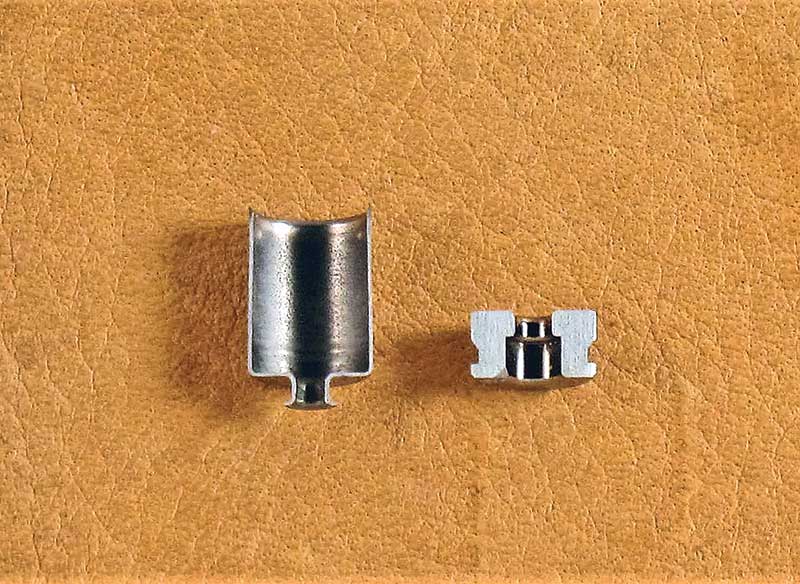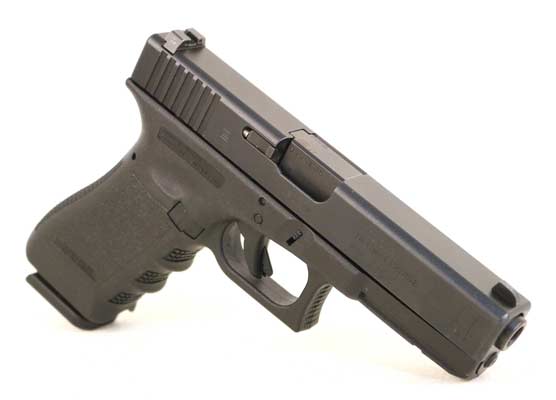Shell Shock Technologies
Bullets have gone through tremendous advancements, especially in the past 40 years, while cartridge cases have been virtually unchanged since the very beginning. Virtually nothing has changed since 1869 — until now.
Cartridge cases are usually referred to as “brass,” however this is no longer exclusively the case thanks to Shell Shock Technologies. This new company is offering a totally new concept in brass cartridge cases, which actually are not brass at all nor are they a one-piece construction. This two-part case technology consists of a nickel alloy cylinder and a solid nickel-plated aircraft quality aluminum head permanently bonded. These cases are manufactured from a flat sheet of material, allowing uniform wall thickness, with thinner walls than brass cases. They are both lighter and stronger too. The first offering from Shell Shock Technologies is a 9mm case. In weighing one of these SST cases and comparing it to a Federal 9mm case, both with primers installed, the former weighs in at 32.6 grains while the latter is 63.7 grains which substantiates the claim as weighing half as much as a conventional cartridge case.
Lots Of Features
Some of the claims made for this new technology are higher pressure ratings and strength, higher elasticity and more lubricious than brass. The naturally slick alloy head material is self-lubricating and does not damage, clog or foul breech and ejector mechanisms like varnish-coated carbon steel, aluminum or polymer-based cases. Taken together, SST claims all these things ensure consistently smooth case feeding and ejection and dramatically reduce most common malfunctions. Unlike brass cases, these new cases are magnetic which means I was able to pick up my spent brass using my three-foot long mechanics magnetic pickup tool!
Shell Shock Technologies supplied me with 9mm Luger cases that were already sized and ready for loading. These cases were primed by me with CCI #500 Small Pistol Primers using the RCBS Universal Priming Tool. For the first loading I chose AA7 as my powder, settling on a charge of 7.2 grains dropped from an RCBS Powder Measure. I selected two bullets, the Oregon Trail 125-grain round-nosed hard cast and the Berry’s 135-grain plated flat nose. Bullets were seated using a standard 9mm RCBS seating and a crimping die.
Five different 9mm semi-autos were chosen, with the muzzle velocity of the first load going from 1,066 fps in the Springfield Armory Range Officer up to a high of 1,112 fps in the Springfield Armory Stainless Steel 1911. With the loads using the 135-grain bullet from Berry’s, the velocity went from a low of 1,064 fps in my old Ruger P85 up to 1,120+ in a Beretta Stainless Steel 92FS and Citadel 1911. All loads were shot at a distance of 10 yards, with excellent overall results.
There are many factors at work when it comes to a uniform load, however, using the cast bullet load in the Springfield Armory 1911 the extreme spread was 16 fps with a standard deviation of 5.8. It has been a long time since I’ve seen anything shoot this uniformly, and the accuracy was also excellent, with five shots placed into 1″. The most accurate load using this cast bullet was 7/8″ through the Springfield Armory Range Officer. Switching to the 135-grain plated bullet resulted in groups averaging less than 1″ for five shots.
The Mechanics
All seating and ejecting was totally flawless using my loads. An extra bonus is the fact the fired cases are very clean and I did not have to run them through a tumbler before reloading. They also operate at lower temperatures and if you’ve ever had a hot spent cartridge go down your shirt you know how welcome this can be.
I mentioned specifically using the RCBS 9mm seating/crimping die for loading the cases for a specific reason. Special dies are required for sizing/decapping and expanding/flaring due to the two-part construction of the Shell Shock case. The carbide sizing/decapping die consists of the sizing body with lock ring, a cap screw for adjustment, polyurethane spring and pusher pin, while the expanding/flaring die has an expander body with lock ring, an adjusting cap screw, polyurethane spring, spring protector and pusher rod. This all sounds complicated, however the instructions are excellent and adjusting the dies is easy, I promise. Both dies fit standard 7/8-14″ presses.
Before sizing, cases must be lubed. I used spray and it was fast and easy. Once this is done and the dies adjusted, cases are easily sized and expanded using the special dies.
This is only the beginning for this relatively new company, and it will be interesting to watch their progress.
For more info: www.shellshocktechnologies.com,
Ph: (844) 778-3243, [email protected]







